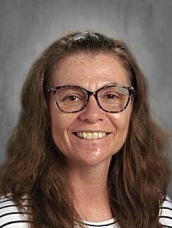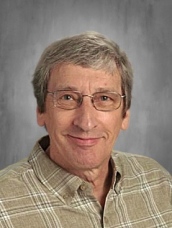Science, Technology, Engineering, and Math (STEM)
| Ms. Casey |  |
STEM 6 and Computer Science Fundamentals 1 and 2 | I teach Computer Science at Lance. I have been a teacher for 27 years. I have taught at Lance for about 11 years. I like to game with family and friends online with my XBOX X. I have 3 dogs. One of my dogs was a puppy mill dog rescue. I have two children. My daughter is at Whitewater. |
| Mr. Domine |  |
STEM | With a foundation in education and work experience as an electronic prepress technician, bringing educational concepts and real-world practicality to my lessons is essential to my teaching style. I want to empower my students not just to experience the technology they live with in our engineered world but to understand how it works and how they can harness it to power their futures. My favorite way to bring math, science, and critical thinking to life for students is through our hands-on projects, in robotics, alternative energy, electricity, computer modeling, and traditional projects. |
Computer Science Fundamentals 1 (Grades 7) and Computer Science Fundamentals 2 (grade 8) – The middle school courses will teach students programming, physical computing, HTML/CSS, and data. Students will create authentic artifacts and engage with computer science as a medium for creativity, communication, problem-solving and fun. Computer science teachers will focus on skill development in design, logical reasoning, and problem-solving that have value beyond the classroom.
STEM (Science Technology Engineering and Math)
Project Lead the Way (PLTW)
The PLTW Gateway To Technology (GTT) program features a project-based curriculum designed to challenge and engage the natural curiosity and imagination of middle school students. They envision, design and test their ideas with the same advanced modeling software used by companies like Lockheed Martin, Intel, and Sprint. They study mechanical and computer control systems; think robotics and animation. Students also explore the importance of energy, including innovative ways to reduce, conserve, and produce it using solar, thermal, and wind power. The knowledge that students gain and the skills they build from the GTT program create a strong foundation for further STEM learning in high school and beyond. For more information go to www.pltw.org
STEM (Science Technology Engineering and Math) COURSE DESCRIPTIONS:
STEM 6: Design & Modeling part 1 – Students will be introduced to the design process to solve problems and communicate ideas. Students will use solid modeling software (a sophisticated mathematical technique for representing solid objects) as part of the design process. Utilizing this design approach, students will understand how design influences their lives. Students will build on their mathematics understanding when learning sketching techniques, applying descriptive geometry, measurement, and computer modeling as components of the design process. Students brainstorm, research, develop ideas, create models, test and evaluate design ideas, and communicate solutions. (1 quarter)
STEM 7: Green Architecture – In a world of reduced resources and environmental challenges, it is important to present the concepts of “being green” to the next generation of designers and builders. Students are introduced to architectural plans, construction styles, alternative materials and architectural sustainability. Students use a 3D architectural software program to create an environmentally friendly home using shipping containers.
Energy and the Environment – Students will investigate the importance of energy in their lives and the environment. They will investigate and design ways to capture alternative energy sources and learn ways to reduce energy consumption through energy efficiency and waste management techniques.
STEM 8: Automation & Robotics – Students trace the history, development and influence of automation and robotics. They learn about mechanical systems, energy transfer, machine automation and computer control systems. Students acquire knowledge and skills in problem solving, teamwork collaboration and innovation.
Design and Modeling part 2 – Students will review and reinforce their math and design process skills learned in Design and Modeling part 1 with more advanced design projects. Students will complete the capstone playground design project. The skills and concepts learned in Design and Modeling part 2 will better prepare students to transition smoothly into the high school engineering classes.